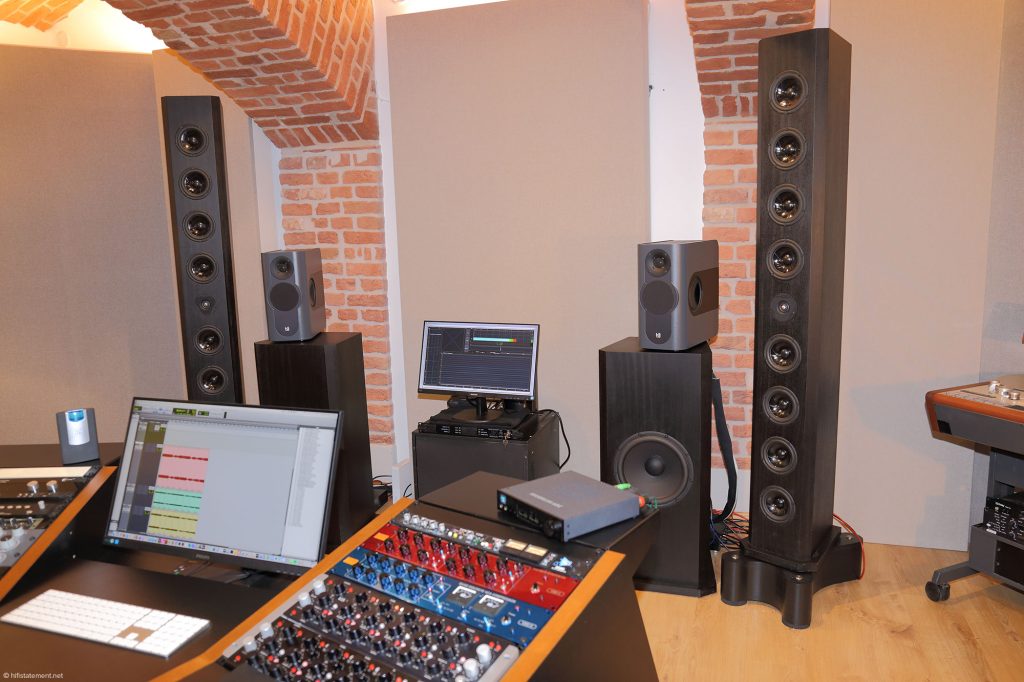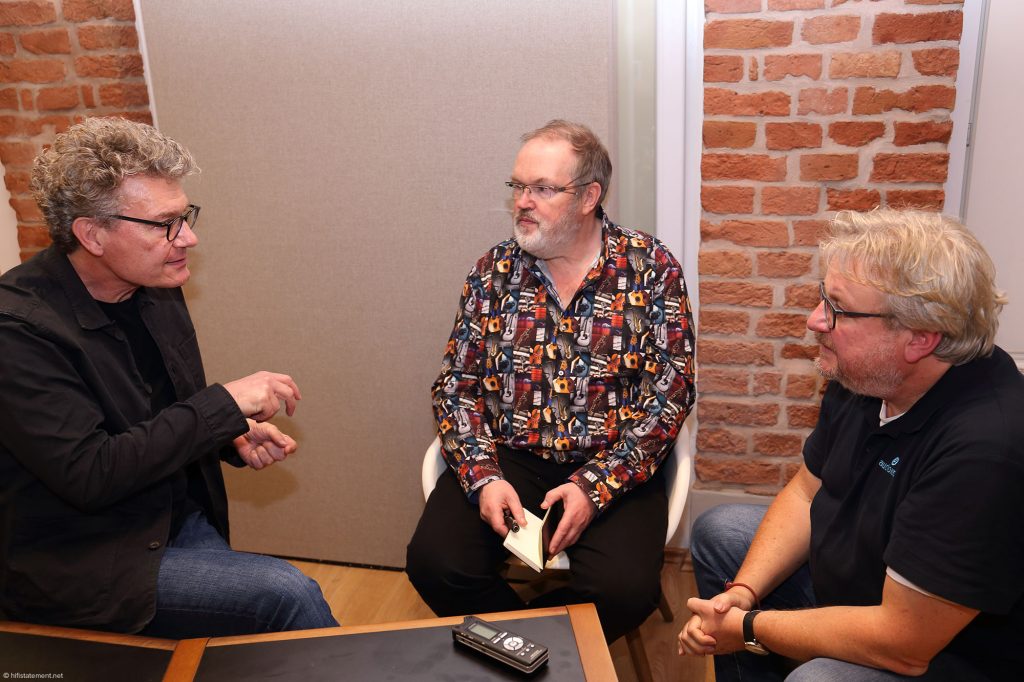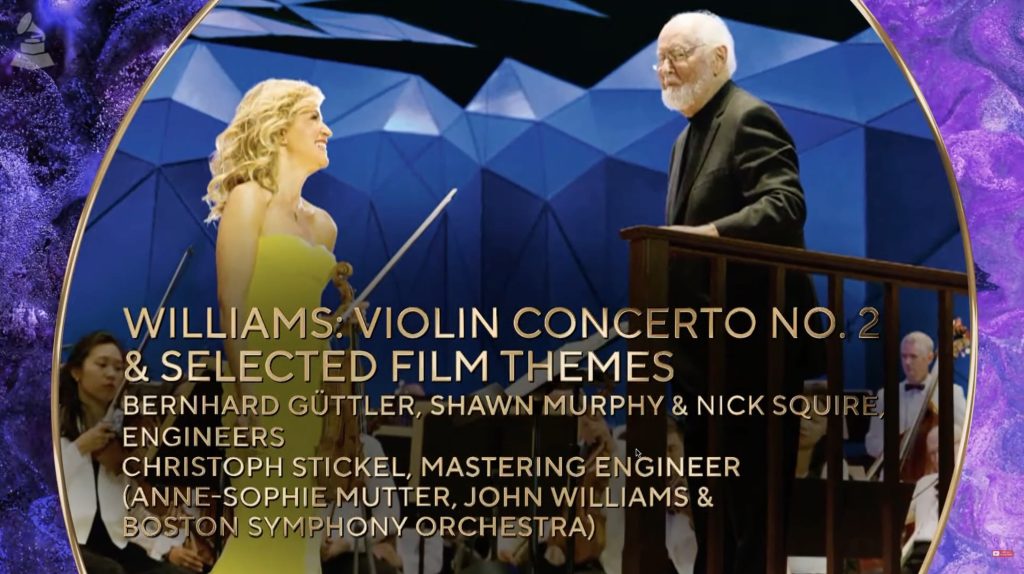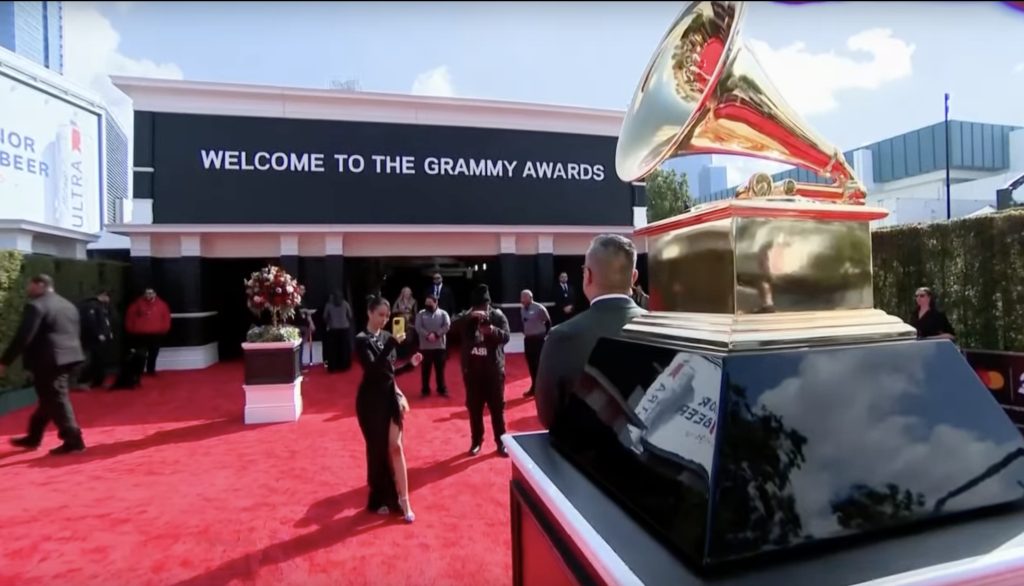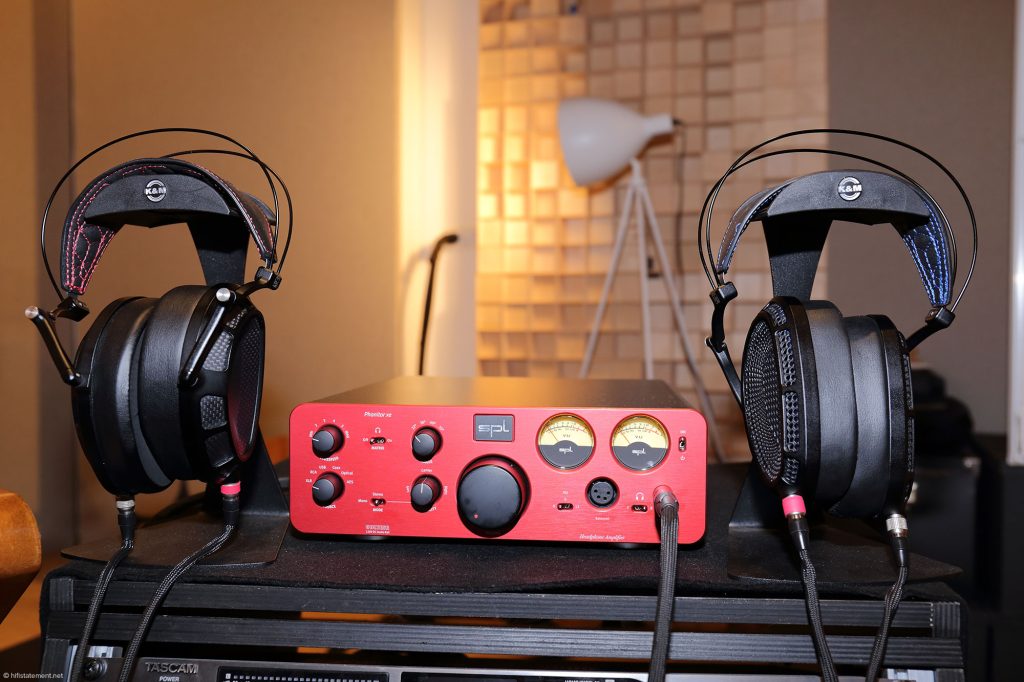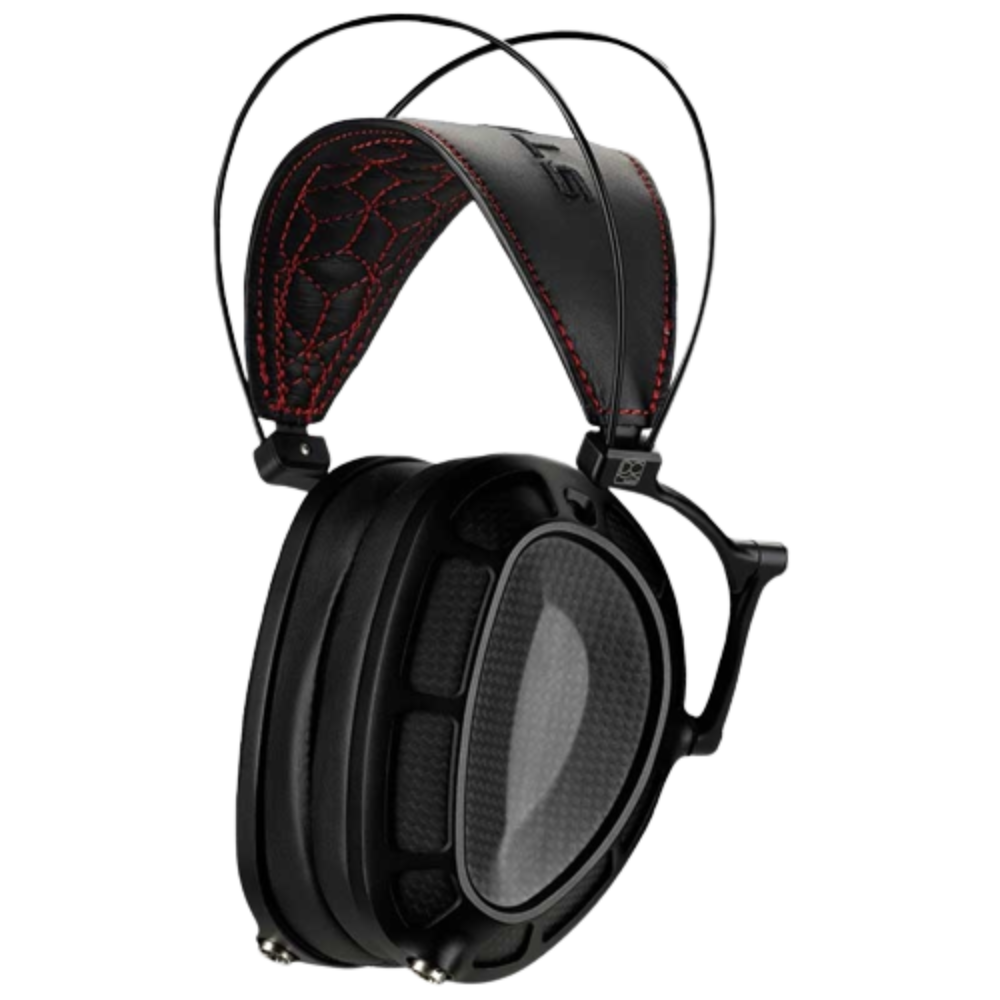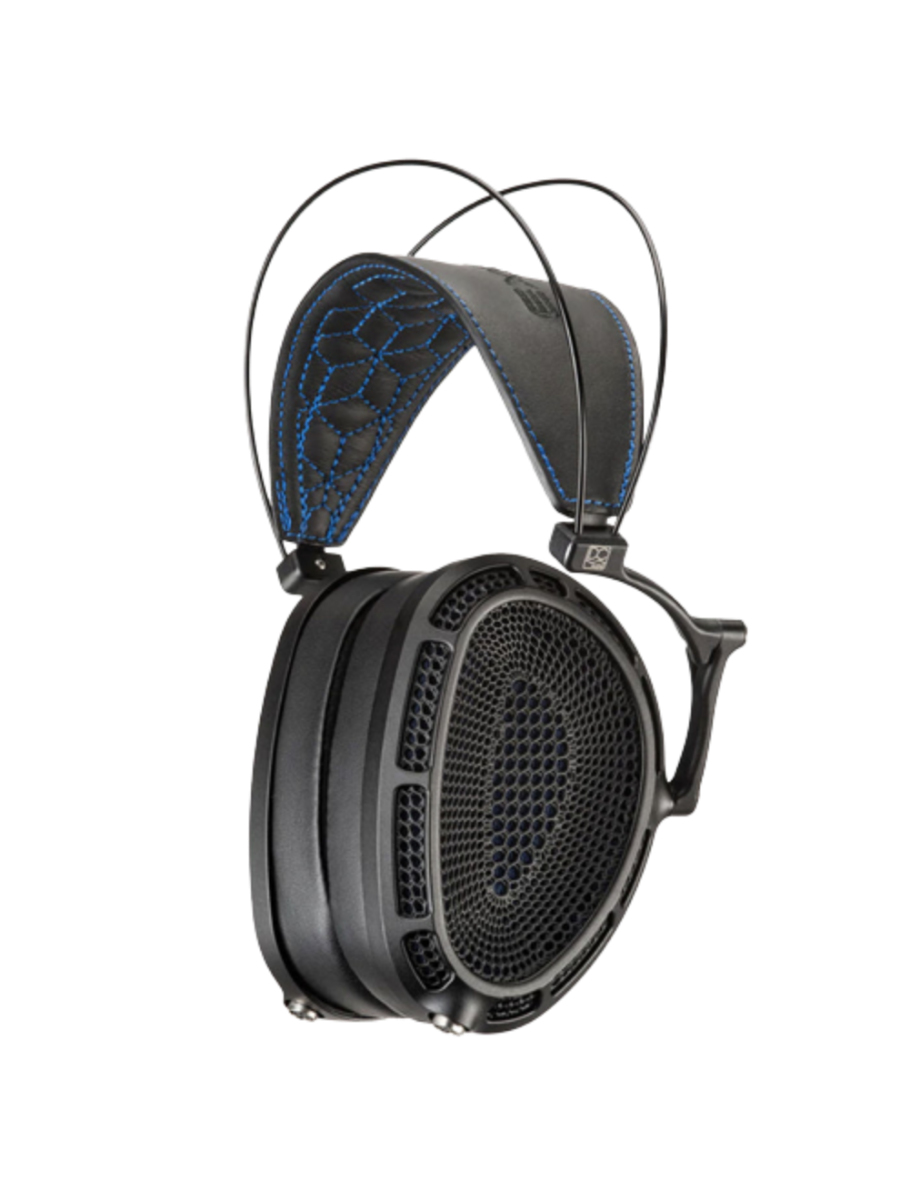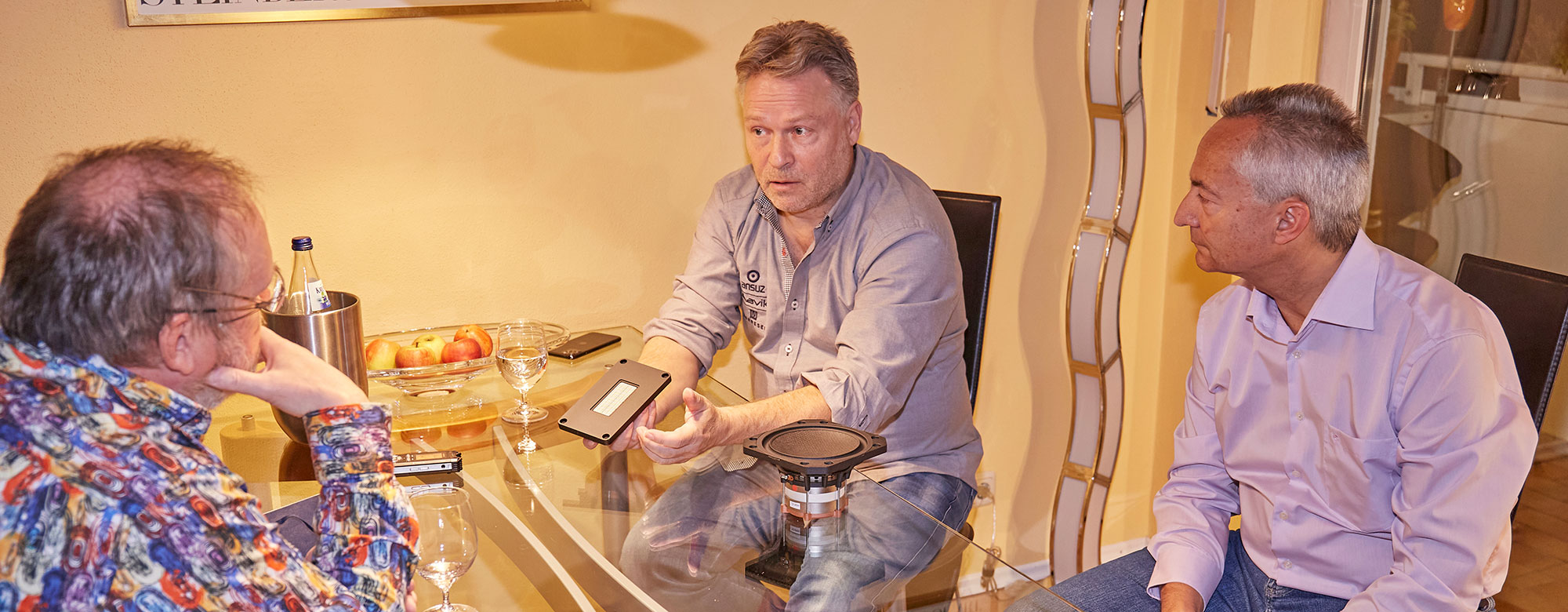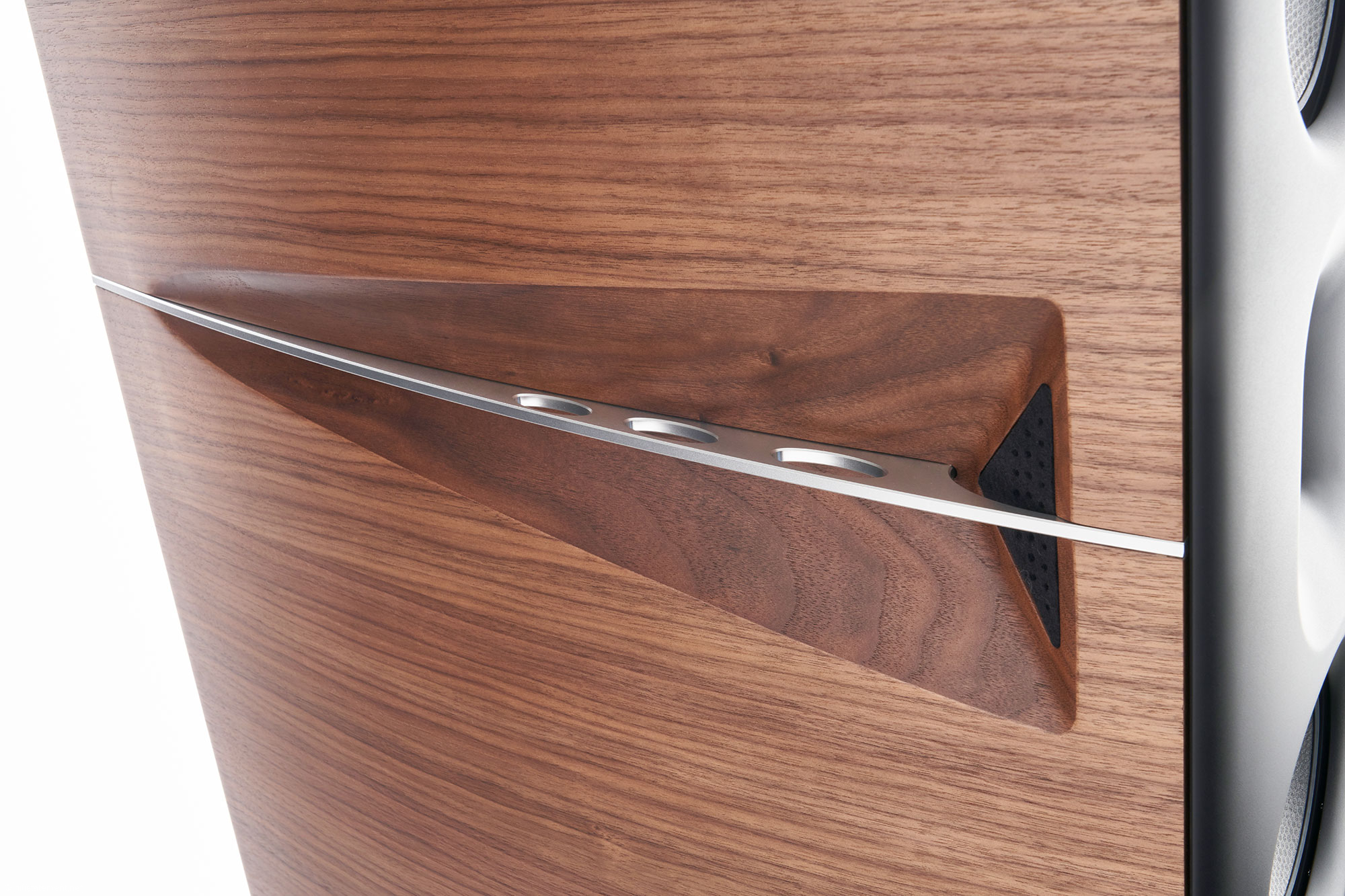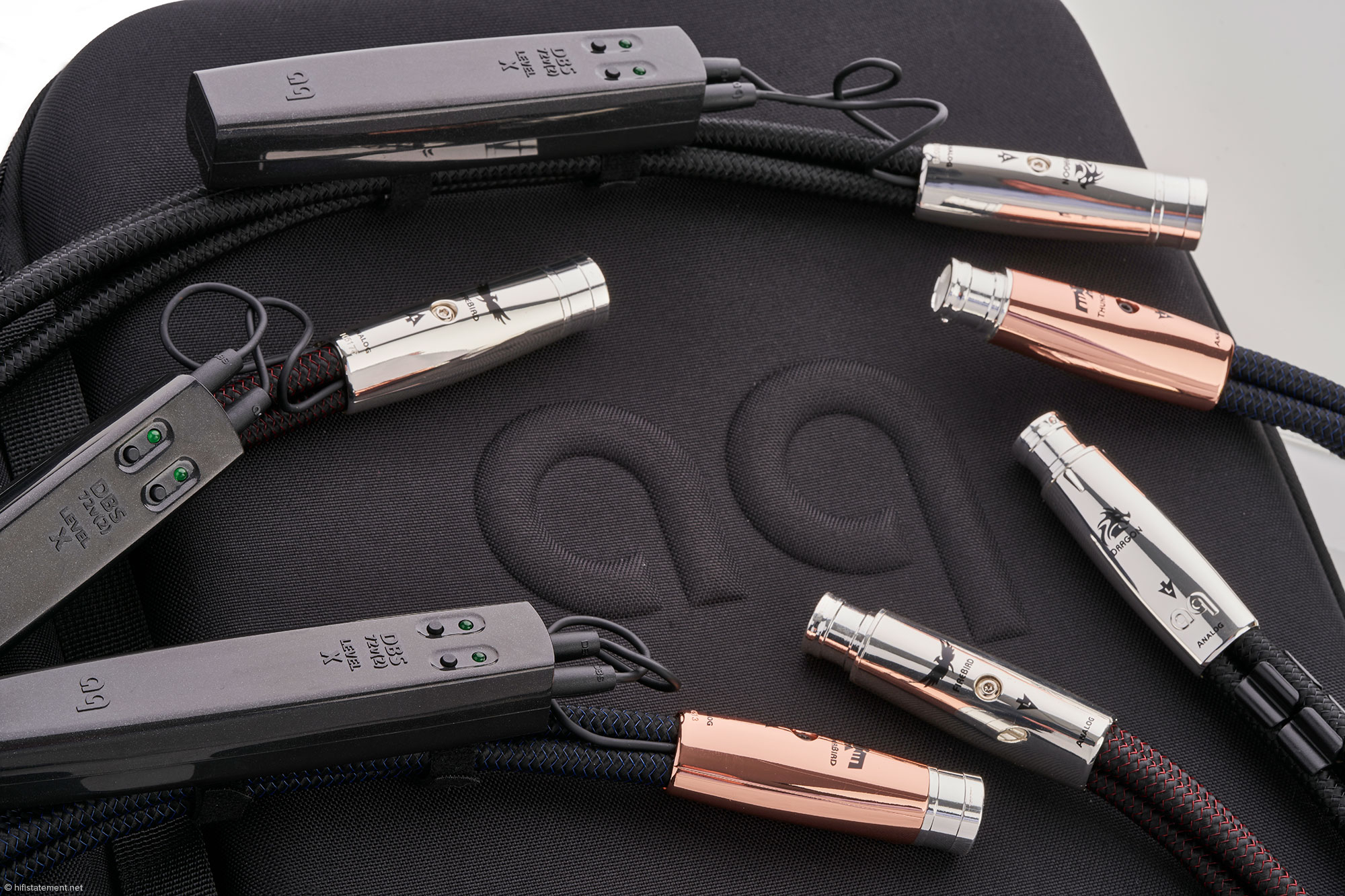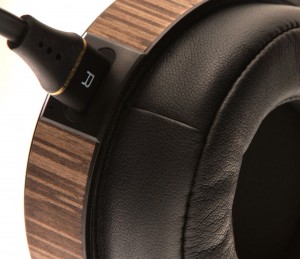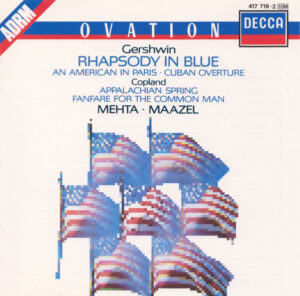What does mastering mean? Read and listen for yourself!
The way mastering is executed at MOFI caused a lot of excitement among audiophiles, and Analog, the magazine of the German Analogue Audio Association, made mastering the cover story. And here, one of the best mastering professionals, Christoph Stickel, has his say in an interview that I had with him. Downloadable sound samples are included free of charge, and my favorite headphones are also briefly discussed.
The fact that I consider Christoph Stickel to be the best mastering engineer, at least in the German-speaking world, is also strongly marked by subjectivity: It’s probably due to the fact that we worked together quite excellently, among other things, on the remastering of the MPS reissues I produced, and on some recordings for Edel's Triple A label that my wife and I made, as you can hear in excerpts from the free downloads of Oscar Peterson's Exclusively For My Friends (HERE) and DePhazz's Garage Pompeuse (HERE). But let's now move on to the entirely objective facts, namely Christoph Stickel's reference list, from which I already quoted in the article about the extremely positive influence of Audioquest's mains power technology (HERE) on the quality of mastering. The list includes Keith Jarrett, Mariss Jansons with the Bavarian Radio Symphony Orchestra, Yello, John Williams and Anne-Sophie Mutter, John Scofield, Sir Simon Rattle, Die Ärzte, Seal, Sergiu Celibidache, Friedrich Gulda, Conchita with the Vienna Symphony Orchestra, No Angels, as well as a Star Wars soundtrack.
Since our last visit to Christoph Stickel Mastering, a lot has happened regarding the loudspeakers. Christoph Stickel talks about his new monitors in the interview below.
Apart from the reasons already mentioned at the beginning of this article, it also seemed to make sense to me to deal with the topic because various download portals often offer several versions of important albums, which differ only in their remastering. In the CSM studio in Vienna, which was decked out for the Christmas season, I met not only the host but also Carsten Hicking, one of the owners of audioNEXT, who every now and then provides Christoph Stickel with headphones from his portfolio, in order to get his professional opinion on the matter. It didn't turn out to be exactly a real conversation on the subject of mastering, though. That’s because as a lecturer at the Erich Thienhaus Institute—better known as the location of the sound engineer or "Tonmeister" training at the Detmold University of Music in Germany—the Munich University of Music, the ARD.ZDF Medienakademie (Media Academy of the German broadcast ARD and ZDF) and the SAE Institute, Christoph Stickel is used to lecturing both competently and entertainingly right after the first question arises.
The mastering engineer Christoph Stickel on the left, Carsten Hicking on the right, and the author in the middle
Interview with Christoph Stickel
Note that Christoph Stickel is a leading mastering engineer in Germany who was nominated for a Grammy for 2022. His comments carry a lot of weight, and will repay careful reading. Dirk Sommer is an experienced audio engineer himself, and well qualified to carry out such a conversation. Dirk was able to secure permission to re-publish this article in an English translation from his audio magazine, HiFi Statement, and PF gladly shares this interview with its many readers.
Dr. David W. Robinson, Editor-in-Chief, Positive Feedback)
At the beginning, Christoph Stickel talks about the history and the different aspects of mastering.
Dirk Sommer: Christoph, just tell us what mastering is all about.
Christoph Stickel: It's always difficult to describe the demarcation between recording and mixing.
Let's look back a few decades, to the 1960s. In the production chain, after recording and mixing, we have the transfer from the master tape to the lacquer for the vinyl release. Now somehow the information has to be transferred from the tape to the cutting stylus. The tape machine, for example, is quite unproblematic in terms of phase, also in terms of the proportion of high frequencies, dynamics and much more. The vinyl, however, is not. Technically, you have to take care of what is on the tape to be later cut onto the record. During this transfer, adjustments often have to be made. That can certainly change the sound and the volume. And then it turned out in the mid-60s that there were a few records that were louder, had more bass, less noise and simply sounded better than the others. This is because the engineer who made the transfer didn't just look at the measurement values in between, but also pricked up his ears and thought about the sound, making it both technically and sonically perfect.
That was basically the point of origin of creative mastering, that you try to process the great recording you have at hand in such a manner that it then later sounds in an optimal and maximally musical way for the targeted medium. There is a very nice metaphor by Steve Hoffmann that aptly describes mastering. He appropriately says: You have a work of art, for example a painting, that you want to present in the best possible form. You now take it to a gallery, with white lights, bright sterile walls, to draw the focus solely to the picture. On the other hand, you can use strobe lights or create a lightshow to stage this work of art perfectly, so that what exactly makes up the respective work of art comes into its own and shines even more. Now you still have to photograph this state of condition, this presentation, in order to then reproduce the photo. That means to process the music sonically in such a way that it ends up sounding perfect, just like trying to find the best-sounding stereo system for your music. You know that very well yourself. You have certain tracks that sound fantastic on one speaker and rather pinkish on others.
In mastering, you try to build the perfect loudspeakers for the respective recording, metaphorically speaking. Of course, there are also technical aspects: The mastering engineer is the person who listens to a record for the last time before it is duplicated. He is not only responsible for making it sound wonderful, but also for ensuring that it is technically flawless: Is there perhaps still a crackling noise, has there been a distortion somewhere, is there a mute? That's what really stresses me out personally as a mastering engineer, but still it's a very important part, which is why I've also become a bit paranoid about it. There might be something left after all! Is everything really OK?
The producer or musician then listen to the master again, resuming in the best case: "It sounds wonderful, Christoph. That's exactly how I want it." But in the end, I am the one to listen to the master for the very last time, and if there's a mistake left and I didn't notice it, I am the one who eventually has to take responsibility for it. So it’s on me to make sure that the sonic and the technical aspects are faultless. There’s something I always like to tell my students: You can take out a professional liability insurance as a sound engineer, which you should. It's not that expensive for a normal recording engineer. But if you tick the box "I master," it costs several times as much. The consequences that can arise from mistakes can have a greater and more unpleasant impact: recalling a complete CD pressing back from the shops, having it pressed again, shipping it out again, et cetera.
That means that mastering combines everything from art to technique. In addition, there are also details that I consider quite important and not at all uncreative: for example, designing the transitions between individual tracks correctly. I.e., I have two titles in a row. How long should the pause between them be? By default, it's two seconds on iTunes. That can fit, but often it doesn't. Does there need to be some silence here to let the previous piece have more of an effect, or does the next track have to follow with some "attack" to propel the album? These are such really filigree, seemingly unimportant details, but which then make a work into a whole. It's also important when we have several tracks on a record, on a CD, or a playlist, that the volume of the individual pieces should be set in such a way that the listener doesn't have to reach for the volume control to readjust, in order to let everything fit together well. Also an important role plays as soon as we leave the field of classical music - and even there I am increasingly encountering it - that we must not fall off in direct comparison even against the competition.
For example, I now have the Sebastian Müller Band here, which we will listen to later. If you leave the mix with its original dynamics, the end product would seem small, thin and dull in direct comparison to other releases in this genre. It must not stand back significantly in a playlist, for example, or it will be skipped immediately. At this point "Dynamic restriction" is required, a term which will probably conjure spots on your face as a high-end aficionado: But this can also be performed very tastefully up to a certain point and give the power, the punch of the music, yet another new dimension. On the other hand, of course, it can kill the music. A very difficult subject. Just think of the loudness war.
These are roughly the things that happen in mastering. Besides that, of course, what are the formats that are currently being consumed? Professionally, I started when the CD was just about to overtake the vinyl record. I learned about the CD, then MC, then DCC, Minidisc, SACD, DVD and all the other formats that came along. Now we are at the point where we are increasingly moving away from physical media—apart from vinyl, of course. Now we have to supply material to a wide variety of online portals. There are various specifications that change again and again. That means that each portal may do things a little differently and have its own special features. The risk lies not only in the circumstance that the product could fall through a technical grid, but also that it doesn't function properly there and can't really live up to its full potential. Then, of course, we have the high-end formats in the highest resolution, which we also all have to serve reasonably. In addition, the world is increasingly becoming immersive. That means even more formats coming along.
(Next to the ears, the most important tool for the mastering engineer are his sound transducers.)
Here with me, you see an awful lot of buttons and knobs that are a lot of fun. And actually, they're the ones that everyone looks at first. But the most important thing about the whole procedure is that I hopefully have reasonably clean ears and that I am able to really evaluate what I'm hearing. We have calculated and calibrated the acoustics here. I have an acoustic space here that has got a defined reverberation time, defined reflections, balanced modes and everything I need to hear and judge optimally. Then I’ve also a loudspeaker system at hand with which I can perceive what I hear linearly, as musically correct and clean as is possible. So listening is the be-all and end-all of mastering. The prerequisite is that I have a listening situation in which I can evaluate objectively. Only when I really hear what I am doing, I am able to intervene sensibly, modify it, improve it, sometimes even repair it. Only when I hear properly do the many, beautiful buttons here make any sense at all.
What kind of speakers are you using at the moment?
I have worked with the Kii Three for several years and have been very satisfied. A few months ago, monitor dB supplied Jürgen Becker’s big Convergence to me. The Kiis are now used more as nearfield monitors, while Jürgen Becker’s Convergence got to be the main speakers now, and with which I am perfectly happy. That's what is around in terms of loudspeakers. I have also recently started using the Dan Clark Audio headphones. In my 30 years of work experience, I have always been someone who liked to work with headphones as well. I started with the K1000 from AKG, this thing you clamped on your head, I thought it was great. Then Stax and Audeze came along, followed by the Dan Clark Stealth model, with which I came into contact during the last High End show in Munich for the first time, which I am very enthusiastic about, and am using now also for work.
You could ask, why do you work with headphones at all? There’s this very expensive acoustically optimized room. There are loudspeakers that account for tens of thousands euros. So, why did you now come up with the idea of putting on headphones? I can only speak subjectively for myself as to why I like to add headphones. It's a different listening situation than in the room; here I have the signal very close to me, it's directly at my ears.
When I perform the most delicate adjustments, for example the pre-delay setting in the reverb—whether it really has to set-in five milliseconds earlier or later – I can hear it very clearly through the headphones, and thus make the perfect adjustment. When I set up a compressor, what will the attack and release times be like? Do I get that certain punch or do I spoil it? The extraordinary proximity I have with the headphones allows me to get that delicately adjusted.
Of course, all of that to finally be heard and adjusted through the loudspeakers. That's a real interplay. The other benefit I get from it is the "technical listening." By this I mean, as I already mentioned before, detecting technical faults such as pops, hiss, distortion, and sizzle. These are problems that one might miss faster when listening through loudspeakers. I almost always listen through the last version with headphones. Also because, as stupid as it sounds, I am sitting here, moving around, my arm on the desk probably making a noise or the chair creaking. It simply distracts me. Was there something, or not? With headphones, of course, I do no longer hear such things. And no matter how I move, I always stay in the stereo center. That's this kind of extremely focused listening, separated from the environment. But ultimately, my sonic decisions are always made on the loudspeakers.
However, one particular thought does cross my mind: How is listening done out there? Probably more and more by using headphones. In my observation, it’s actually the medium that is used a lot by the masses. On the train, underground or bus, I mostly see people listening through any kind of in-ears. I can no longer state that this is still the secondary form of auditive consumption compared to the loudspeaker. As to my experience, listening through headphones—of whatever quality level—increasingly makes up the majority. The good old stereo that we grew up with is no longer widely used by the masses; instead, people are more likely to spend money on headphones.
In this context, mastering with headphones is becoming increasingly important:
Christoph, don't you perform mastering differently when using headphones?
Yes and no. I would like to use an analogy here. At some point I was asked by a student, I think almost ten years ago now, "Christoph, do you also listen through an iPhone?" I refused to accept it and replied I would never do that, and if it ever came to that, I would look out for a new profession.
With good reason.
I am also noticing that with my children, who are around 20 years old, that their music either plays through headphones or the mobile phone’s in-built speaker. Of course, I've also bought them speakers and other gear. But I guess that's the new reality. I never monitor through these little speakers, but I do have them on my radar. As to my experience, if I'm working in a very good monitoring situation, then it fits all the other speakers as well. Of course, while one speaker is a bit boomy, the other sounds a bit thinner, depending on the basic sound characteristics of the speaker. But there will always be a happy middle way once I have created a clean sonic image. This also applies to playback on mobile phone speakers.
But let’s go back to your question: Do I have to change my way of working and rather optimize the sound for headphone playback? What is the main difference between playback via loudspeakers and headphones?
Of course, with headphones we almost always have an in-head localisation. There is a pronounced left/right detection. This means that our stereo image is different from what we know from loudspeakers in the room. But when I try to optimize a normal stereo production for headphones, to create a soundstage with all my might, it mostly backfires. With a lot of luck, it will be a touch better for the headphones I am using at the moment. But this is not compatible with others.
Again, the mastering I did on speakers sounds similar on most systems and is also compatible. However, I notice that I have to work very cleanly in the low frequency range, as the headphones don't forgive anything. Especially with very good headphones, bass reproduction is something different than with many speakers. I have to put a lot of effort into hearing the bass cleanly through the speakers. The listening room must be in excellent shape, too. The speakers have to be really good ones, and the room's modes have to be equalized in order to reproduce and perceive really low frequencies in a clean and controlled way. Headphones can often do that better. With very good headphones, I am able to hear the lows better than I do in a normal loudspeaker listening situation. This means that the consumer will notice my sloppy work in this frequency range more quickly with headphones.
I think a lot of headphones are so intense in their bass reproduction that if you were to mix with them, you wouldn't have any fun listening to the result over a stereo.
Exactly. Then I would have lost the game. But as I said before, if I listen here under optimal conditions and get the bass range spectrally balanced, it will also fit in most other listening situations. A headphone with a bass boost will reproduce more bass if I have worked cleanly, but without resonances and without booming.
In my work, the loudspeaker is my utmost reference. Here, everything has to fit. With the headphones, I work on filigree details to then finalize them on the loudspeakers. When I'm satisfied with the mastering and have heard everything through the speakers, I usually give it a final pass with headphones. As I said, I use them to listen to potential technical errors in a dedicated way at the conclusion, to then probably notice that my fingers went up for some journey over the equalizer panel having made small readjustments along the way. So we end up talking about the quarter of a decibel here that perhaps I only imagine I still hear. But I did make the small adjustment, double-checked it then on the loudspeakers and found that it was well done.
For the author, headphones and spatial imaging are practically contradictory. The professional, on the other hand, takes a much more differentiated view.
Spatiality is always very important to you. When we tried out the Audioquest Niagara units, you noticed that there was even more spatiality in your edited pieces than you had heard before.
Yes, absolutely.
Can you also verify and perhaps even create a spatial impression with headphones?
Well, what I can do very well with headphones is to set the reverberation. What I'm personally still struggling with, but slowly getting there, is to really define spatial impressions, that is, a depth gradation with the headphones. Not just being able to say the instrument is located in front of another, but clearly hearing its position on stage. That's where I'm at, but I had to learn that first. The stage isn’t deep, but more spread out left and right, and more dedicated. I enjoy listening to that, to perceive the tonal colors and also those spatial impressions.
I have never experienced the impression of depth, no matter how good the headphones were.
I guess you have to distance yourself from the loudspeakers and get involved with the headphones. Then you can feel it. Not the portrayal of size, but the depth gradation is definitely there. It's probably a matter of practice.
Whether Dan Clark Audio Stealth or Expanse, both require a high-end headphone amplifier with plenty of power like the SPL Phonitor.
The Dan Clark Audio Stealth (image courtesy of Dan Clark Audio)
I was very excited about Dan Clark Audio's Stealth, but when I tested the Expanse I wasn't sure which of the two I preferred. Here’s Christoph Stickel's opinion on the subject:
The Dan Clark Audio Expanse (image courtesy of Dan Clark Audio)
I see you have both Dan Clark models in use. I had also tested them once and always found it very difficult to say which one is my real favorite. What do you think?
Carsten had already given me the Stealth right after the High End show. I was very enthusiastic about it. Now I've got the Expanse. I haven't wanted to put it off for a long time. One reason certainly is that the ears don't get so warm when listening over a long period of time. It simply is an open system. The wearing comfort is different because air gets to the ears and you don't get sweaty even when listening for a long period. After carrying out a longer A/B comparison with the Stealth, it's not just a matter of ventilation: the Expanse seems a bit more mellow to me. It is more pleasant. It renders everything identically as I know it from the Stealth, just a little more friendly. Listening never becomes an effort.
Recently I've had both of them here for comparison and I've noticed that I'm listening more through the Stealth again because it renders the upper mid-range very clearly, for me this being the frequency range between 1200 and perhaps 3000 hertz. I am able to really hear every subtlety here. I also hear more punch and more definition. Not that the Expanse has less of that, but it handles it more kindly. That could be due to the closed system, you'd have to go and ask a headphone designer. I can't answer that. But the Stealth is more fun and makes more sense for my professional situation. With the open-back Expanse, I just listened to records, just enjoyed them, simply forgot to work: "This is terrific! Isn't the world a beautiful place?" But the Stealth prompts me to "Do something now." Here’s another task, that needs to be done. And when I have finished it, the Stealth also says, all is good now and is pure enjoyment. I don't want to give both a rating. I would just describe them as different. Whereas both create the same sense of taste, I don't know how you think about it: For me, it's the same grape variety, the same winemaker, but the wine is vinified differently. That's how I perceived it.
Absolutely, I also find it very difficult to choose one side, but in the end I tend towards the Stealth.
You also make recordings. Then it's very natural that you like to have this immediacy and proximity and unambiguousness for your sound engineer's job. In addition, you can listen with the Stealth in a focused way even in a noisy environment.
[Sebastian Müller kindly provided us with excerpts from three tracks of his first album S/M/B 1 for this article. Read how the mixes were edited, which you can compare with the final versions via download. The links to the downloads are below.]
It's nice to talk about mastering. But you said you would give us examples of what mastering is about. What can you demonstrate?
Basically, it is absolutely lovely of Sebastian Müller that he makes his band’s material available to us and that we are allowed to perform an A/B comparison. It's not at all a matter of course to get permission from a record label, from a producer, to use recordings. We will pick two or three tracks from the two albums that I mastered for Sebastian Müller and compare them. One is the original mix as I received it and the other is the mastered version. This isn’t a classical genre, nothing purist. It’s an awesome band, soulful, partly danceable, it has got inspiring singers, and a terrific brass and rhythm section. Not to forget the exquisite compositions by Sebastian. In other words, this has to work on a commercial level.
I had done my sound editing here exclusively on the analogue level. I received the mix as digital files, then converted them digital-to-analogue and subsequently worked with analogue equalizers, compressors and so on. Then I converted it back analogue-to-digital and created the digital files for release. For mastering, there were parametric EQs, and an analogue dynamic EQ. In addition, there was a tube compressor, but here it has more of a "gluing" effect, basically bringing all the material together, forming even more of a band out of the individual signals, whereby the control response is relatively gentle. It’s about a decibel or so, this compressor also brings a little bit of the tube's harmonics into play, conferring it a little more character. Then, as I said before, there's the parametric EQ, which I used to take out a few resonances and feature the lows a bit more, where I felt it was right. On top of it I added a compressor, which basically resolves the transients a bit clearer and condenses the mix. For the SMP band, I used the Vertigo VSC-2 as a compressor, which can handle this very nicely and with which I can exactly map out this swing-in and swing-out process even clearer, so that the groove, the soul, the intensity that is on the recording is emphasized even more strongly.
Why isn't all this already done in the mixing?
Recording and mixing is a process of working on the music, interpretation, performance, the sound of instruments and much more, and then putting it all together - a process that can take days or weeks. I master about four albums in a week, so I have a very good overview of how albums of a genre sound, how the mixes sound. I look at the production from a distance. For example, I haven't spent nights with the singer tweaking his or her intonation or trying to finance the production. So I am unconsumed and unbiased and can concentrate exclusively on the final product, having a lot of experience in evaluating things as well. After I've worked out the mastering, it gets of course back to the artist, or in this case the producer, who listens to it all the way through and hopefully says: "It's wonderful!" or "Christoph, that one track, can you get it a bit more aggressive?" That’s feedback that I incorporate until everyone is happy. Then I still have to bring it into the right shape: transitions, pauses, volume – those things we already talked about. And then I work out the different masters for the different media applications. All of this resumes to about one and a half days of concentrated work, which can sometimes be spread over a week. But I always try to work out the whole sound for an album in one session, getting an idea, crossing the gap. Possible corrections and the creation of the master can then also happen later.
(Downloads for different music portals and physical sound media require different versions. Here Christoph Stickel names some of the special requirements.)
When you say you're finishing an album for different media, that doesn't mean that anything else is changed tonally, does it?
If it's for vinyl, then I have to pay close attention. In principle, I create a version for myself that I feel is harmonious, that sounds to me exactly the way it should be. If it is intended for vinyl release, for example, there are certain restrictions. In the low frequency range, for example, we have to be mono-compatible. I examine the lows for mono compatibility for vinyl and if necessary I correct them so that it sounds good, so that it doesn't just match technically. I make sure that the cutting engineer who does the transfer from my master to the cutting stylus receives material that he can work with well, that presents, for example, no phase problems in the bass. The treble must not be too intrusive, so that he can easily find the perfect solution for his equipment. The cutting engineer may also have to do some reworking. But I try to prepare the master in such a way that even after the technical adjustments for vinyl have been made it sounds as I had imagined it. For some music genres, my vinyl version is also a bit more dynamic than the one used for digital releases.
In addition to vinyl, there is also the "Apple digital master," for example, which has to be delivered and checked in a certain form. In addition, for the majority of online media we have a standard of -14 LUFs or -16 LUFS ("loudness units relative to digital full scale (0 dBFS)"). This is a standardized loudness measurement, which I don't want to go into technically now. The important thing is that it works properly on the online media. That it complies with the standards but does not fall behind other tracks on a playlist.
There really is no getting around making the lows mono for vinyl?
Of course, the bass doesn’t necessarily have to be mono, but the left and right channels must correlate with each other. There may well be different information on the left and right, but it must not eliminate one another when switched to mono. Such signals cannot be cut on a lacquer foil. So it’s not mandatory for me to make it mono. But if I have the same information on both the left and the right, which then becomes increasingly wider in phase, the cutting stylus would try to follow up with a movement that is physically impossible. In that case, I have to set the bass to mono so that nothing can go wrong.
That's why you have your display instruments.
Instruments help well here, but you should also follow your ears. The same applies for the high frequencies. We should avoid having too much of a treble boost, because due to the RIAA equalization we always have to face a technically conditioned treble boost on the record when it is cut. And, if there is a decent sharpness in the highs, for example, at twelve kilohertz, as well as notable sibilants and blaring cymbals, then the cutting stylus will reply: "Oh no, not this way." That's when I have to try to get things a little smoother beforehand. But I'm not trying to interfere with the cutting engineer and do his job. I can't do that at all, because I have neither his knowledge nor his equipment. But I have to prepare it aesthetically in such a way that possible technical intrusions do not change the tonal idea significantly. If the cutting engineer now has to apply a few technical adjustments, the sound will be just right. From this point of view, I can evaluate the high frequencies very well using headphones.
On a nasty note, I wouldn't dare to do that with an Audeze, for example, because I've seen what good equalization looks like done by Weiss for the LCD-X. We’re talking about plus/minus four decibels here.
Once you're tuned in to something, that usually helps. But when it comes to mastering, when I raise or lower a particular frequency, I am handling steps of 0.25 decibels. Then such a lack of cleanliness on the part of the monitors or headphones is critical. If I make settings that sum up to three or four decibels, then I start to think if I'm fooling around, or what’s the problem? These are ranges that are simply too large. Look at the settings here: I have 0.5 decibels, I have one decibel. So between 0.5 and two decibels is the normal range I am working in. That means that the playback should also be a clean one within this range.
So, enough of theory here: Enjoy excerpts of three tracks from Sebastian Müller's first album and compare them with the mix that was delivered for mastering. Have fun with it!
Sebastian Müller Band 1
https://www.hifistatement.net/feuilleton/item/3485-was-bedeutet-mastering-hoeren-sie-selbst
In einem kuehlen Grunde Mix.wav
https://www.hifistatement.info/downloads/22-12-27_mastering/In-einem-kuehlen-Grunde-Mix.wav
In einem kuehlen Grunde mastered.wav
https://www.hifistatement.info/downloads/22-12-27_mastering/In-einem-kuehlen-Grunde-mastered.wav
Samballi Mix.wav
https://www.hifistatement.info/downloads/22-12-27_mastering/Samballi-Mix.wav
Samballi mastered.wav
https://www.hifistatement.info/downloads/22-12-27_mastering/Samballi-mastered.wav
Scarborough Fair Mix.wav
https://www.hifistatement.info/downloads/22-12-27_mastering/Scarborough-Fair-Mix.wav
Scarborough Fair mastered.wav
https://www.hifistatement.info/downloads/22-12-27_mastering/Scarborough-Fair-mastered.wav
A little tip: Regardless of the quality of your digital playback system, it sounds better/the differences are more noticeable if you download the files to a hard disk instead of only streaming them.
STUDIO
cs mastering – Christoph Stickel
Webgasse 22
1060 Vienna
Austria
+43 660 9360050
PS: Time and again we are asked whether the music files can only be listened to on the computer or whether they can also be saved on one's own hard drive. Of course, the latter is possible as well.
First off, here are brief operation instructions for Mac users: Perform a so-called secondary click, depending on the trackpad settings, by tapping with one finger on the bottom right of the trackpad or at any point by tapping with two fingers. With the Magic Mouse, you can perform the secondary click by pressing on the right (default setting) or left surface of the mouse. A selection window then appears in which you click on "Load linked file" or "Load linked file as" to start the immediate download of the desired file.
For the Windows users out there, Wolfgang Kemper explains how to do it: Click on the download symbol with the right mouse button and select "Save as...". Then a window appears in which you can select the location where you want to save the file. Click on the "Save" button and you are ready to go.
Photography by Birgit Hammer, except Grammy and Dan Clark Audio images.





